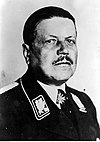
Gustav Ludwig Hertz was a German experimental physicist and Nobel Prize winner for his work on inelastic electron collisions in gases, and a nephew of Heinrich Rudolf Hertz.

Manfred von Ardenne was a German researcher and applied physicist and inventor. He took out approximately 600 patents in fields including electron microscopy, medical technology, nuclear technology, plasma physics, and radio and television technology. From 1928 to 1945, he directed his private research laboratory Forschungslaboratorium für Elektronenphysik. For ten years after World War II, he worked in the Soviet Union on their atomic bomb project and was awarded a Stalin Prize. Upon his return to the then East Germany, he started another private laboratory, Forschungsinstitut Manfred von Ardenne.

The Uranverein or Uranprojekt was the name given to the project in Germany to research nuclear technology, including nuclear weapons and nuclear reactors, during World War II. It went through several phases of work, but in the words of historian Mark Walker, it was ultimately "frozen at the laboratory level" with the "modest goal" to "build a nuclear reactor which could sustain a nuclear fission chain reaction for a significant amount of time and to achieve the complete separation of at least tiny amount of the uranium isotopes." The scholarly consensus is that it failed to achieve these goals, and that despite fears at the time, the Germans had never been close to producing nuclear weapons.
Reichspost was the name of the postal service of Germany from 1866 to 1945.

The Deutsche Bundespost was a German state-run postal service and telecommunications business founded in 1947. It was initially the second largest federal employer during its time. After staff reductions in the 1980s, the staff was reduced to roughly 543,200 employees in 1985. The corporation was dissolved in 1995 under two rounds of postal reforms that took place in the German Post Office in 1989 and 1995, respectively. Following the reforms, the former Deutsche Bundespost was broken into three publicly traded corporations: Deutsche Post AG, Deutsche Telekom, and Deutsche Postbank AG.
The Reichsforschungsrat was created in Germany in 1936 under the Education Ministry for the purpose of centralized planning of all basic and applied research, with the exception of aeronautical research. It was reorganized in 1942 and placed under the Ministry of Armaments.
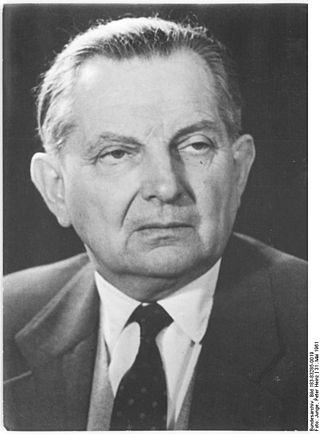
Peter Adolf Thiessen, PhD was a German physical chemist. He voluntarily went to the Soviet Union at the close of World War II, and he received high Soviet decorations and the Stalin Prize for contributions to the Soviet program of nuclear weapons.
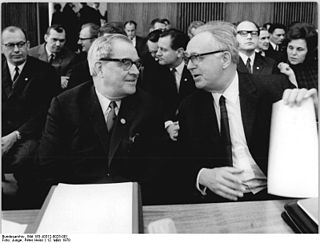
Max Christian Theodor Steenbeck was a German physicist who worked at the Siemens-Schuckertwerke in his early career, during which time he invented the betatron in 1934. He was taken to the Soviet Union after World War II, and he contributed to the Soviet atomic bomb project. In 1955, he returned to East Germany to continue a career in nuclear physics.
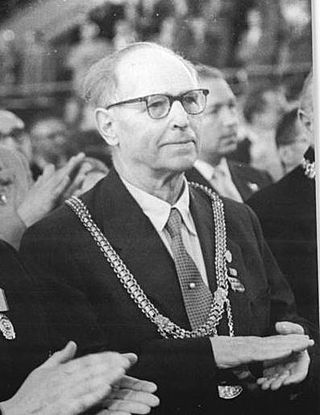
Max Volmer was a German physical chemist, who made important contributions in electrochemistry, in particular on electrode kinetics. He co-developed the Butler–Volmer equation. Volmer held the chair and directorship of the Physical Chemistry and Electrochemistry Institute of the Technische Hochschule Berlin, in Berlin-Charlottenburg. After World War II, he went to the Soviet Union, where he headed a design bureau for the production of heavy water. Upon his return to East Germany ten years later, he became a professor at the Humboldt University of Berlin and was president of the East German Academy of Sciences.

The Soviet Alsos or Russian Alsos is the western codename for an operation that took place during 1945–1946 in Germany, Austria, and Czechoslovakia, in order to exploit German atomic related facilities, intellectual materials, material resources, and scientific personnel for the benefit of the Soviet atomic bomb project.
Günter Wirths was a German chemist who was an authority on uranium production, especially reactor-grade. He worked at Auergesellschaft in the production of uranium for the Heereswaffenamt and its Uranverein project. In 1945, he was sent the Soviet Union to work on the Russian atomic bomb project. When he was released from the Soviet Union, he settled in West Germany, and worked at the Degussa company.

This article is based on a translation of the corresponding article in the German Wikipedia.
Justus Mühlenpfordt was a German nuclear physicist. He received his doctorate from the Technische Hochschule Carolo-Wilhelmina zu Braunschweig, in 1936. He then worked in Gustav Hertz's laboratory at Siemens. In 1945, he was sent to Institute G, near Sukhumi and under the directorship of Hertz, to work on the Soviet atomic bomb project. Released from Soviet Union, Mühlenpfordt arrived in East Germany in 1955. He was appointed director of the Institut für physikalische Stofftrennung of the Academy of Sciences, in Leipzig. From 1969 until his retirement in 1974, Mühlenpfordt was director of the Forschungsbereiches Kern- und Isotopentechnik der Akademie.
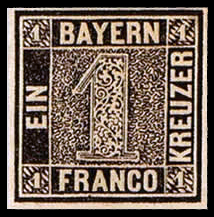
This is a survey of the postage stamps and postal history of Germany and philatelically related areas. The main modern providers of service were the Reichspost (1871–1945), the Deutsche Post under Allied control (1945–1949), the Deutsche Post of the GDR (1949–1990), the Deutsche Bundespost (1949–1995), along with the Deutsche Bundespost Berlin (1949–1990), and are now the Deutsche Post AG.
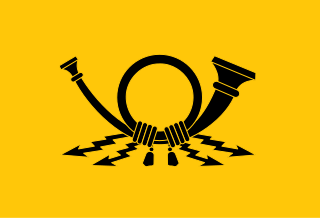
The Deutsche Post (DP), also Deutsche Post of the GDR was the state-owned postal and telecommunications monopoly of the German Democratic Republic. The DP was placed under the control of the Ministry for Postal and Telecommunication Services of the GDR(Ministerium für Post- und Fernmeldewesen der DDR - ) - a member of the Council of Ministers of the GDR(Ministerrat der DDR) - and was in operation from 1949 until the reunification of Germany on 3 October 1990.

Robert Abraham Esau was a German physicist.

The Reichs-Rundfunk-Gesellschaft was a national network of German regional public radio and television broadcasting companies active from 1925 until 1945. RRG's broadcasts were receivable in all parts of Germany and were used extensively for Nazi propaganda after 1933.
The Communications Authority of Kenya (CA) is the regulatory authority for the ICT industry in Kenya with responsibilities in telecommunications, e-commerce, broadcasting and postal/courier services. The CA is also responsible for managing the country's numbering and frequency spectrum resources, administering the Universal Service Fund (USF) as well as safeguarding the interests of users of ICT services.
The Ministry of Transport and Communications of Peru is the government ministry responsible for regulating transportation and communications services. It is headquartered in Lima. As of 13 December 2022, the minister of transport and communications is Paola Lazarte.
Hans Schuberth was a German politician who from 1949 to 1953 was the first Federal Minister for Post and Telecommunications in Konrad Adenauer's first cabinet.






